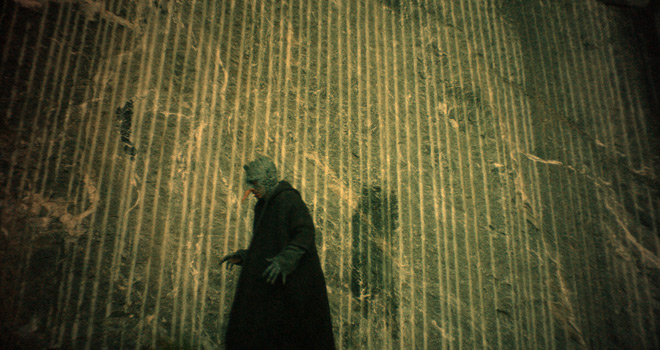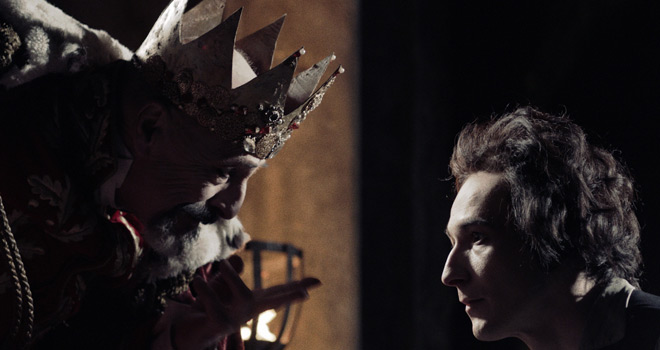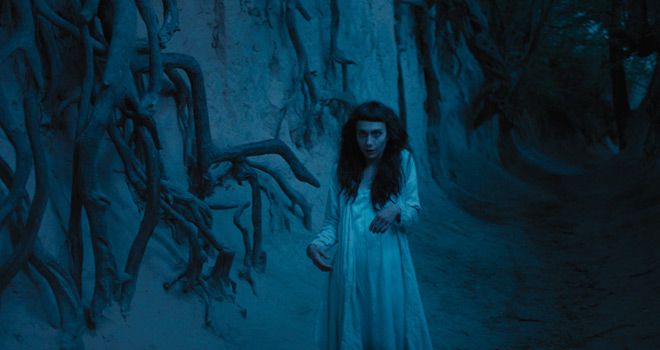Set to be released to theaters across America and all digital platforms on Friday, March 29th, The Field Guide to Evil is a feature-length, anthology Horror film with an excellent concept: Eight directors from eight different countries make a short Horror story based on folklore from their homeland. Not only is this a great concept but the Folk legends are rather obscure unless you are perhaps a hardcore Folk-monster enthusiast, so this film will be the introduction to these legends for most viewers. The nations represented are Hungary, Austria, Greece, Germany, Norway, India, Turkey, and the United States. Some shorts are better than others, but as an anthology, it holds together pretty well despite the shakey acting in some places.

There are some known Horror hitters in the director’s chair for this anthology including Can Evrenol (Baskin 2015, Housewife 2017), Veronika Franz (Paradise: Faith 2012, Goodnight Mommy 2014), and Peter Strickland (Berberian Sound Studio 2012, In Fabric 2018), so viewers can have some sense of the tone and style going in. First up is The Sinful Woman of Hollfall, written and directed by Franz from Austria. This was the best choice for the anthology to hit the ground running and has some excellent cinematography to go with an interesting premise that focuses on the clash between Christian and Pagan values as well as forbidden love.
Next is Haunted by Al Karisi, The Childbirth Djinn from Evrenol of Turkey. His film Baskin was well received by most and surprised a lot of viewers with its mind-bending narrative and graphic violence. Haunted by Al Karisi, The Childbirth Djinn certainly shares some of that tone, where the end of a young Turkish woman’s pregnancy is being watched by the titular demon, waiting for the perfect opportunity to claim the baby as its own.
From here things slow down a bit which brings up the first problem with the anthology – pacing. It’s a difficult task to pace an anthology film and The Field Guide to Evil exemplifies this. The next two entries, The Kindler and the Virgin and Beware the Melonheads are much different than the first two and while that is not inherently bad, they feel too sharp a turn of direction from the beginning. Beware the Melonheads especially because of its unapologetic campy tone and cringe writing and delivery. As these are eight different directors from different cultures, a lot of variation is to be expected, but nonetheless viewers will feel pulled in a less favorable direction after settling into the tone of the earliest entries.

Moving on, Whatever Happened to Panagas the Pagan? by Yannis Veslemes of Greece picks things up a bit. It’s set in 1984 but really looks and feels like it could have been hundreds of years ago until the ending. Here we focus on Christmas Day in a part of Greece that still holds Pagan customs, and the goblins that dare venture into the human world on this special day. This is one of a couple of entries that have an interesting premise, solid if a bit confusing setup, and a strange, underwhelming payoff that will probably leave many viewers with more questions than answers.
This bring us to the second problem with the film – narratives and endings. Doubtless some of these things will be lost in translation, so to speak, if one is completely unfamiliar with certain cultural elements, but more than a couple of the shorts feel unfulfilling. Perhaps a better way to see it is that some of these feel like they could have been longer or more fleshed out. It is a bit unclear if these endings were supposed to be obscure but they can lack a sense of finality and feel underwhelming.
Furthermore, The Palace of Horrors and A Nocturnal Breath, from Ashim Ahluwalia (John & Jan 2005, Miss Lovely 2012) of India and Katrin Gebbe (Sores & Sîrîn 2009, Nothing Bad Can Happen 2013) of Germany, respectively, are the start of the home stretch and while both are good enough at what they do, the anthology still does not pick up to the energy it had at the start. This problem is exacerbated by the aforementioned underwhelming endings. Viewers don’t have the room to settle or take in a story before it ends and segues into the next which can be a bit frustrating. The last entry, Cobbler’s Lot is the most unique of the lot and is a silent short reminiscent of early Hollywood, but is surprisingly grotesque and is one of the more memorable entries, so the anthology finishes on a good note like it began.

Overall, The Field Guide to Evil is a mixed bag with some clear flaws, yet it is still an overall enjoyable experience. The short format is both a blessing and curse, as sometimes it feels unfulfilling yet none are long enough to overstay their welcome should they be less interesting. Additionally, this is just too cool a concept for Horror fans to pass up, as it’s a great introduction to some unexplored Folk Horror from around the world. Flawed but still enjoyable, Cryptic Rock gives The Field Guide to Evil 3.5 out of 5 stars.






No comment